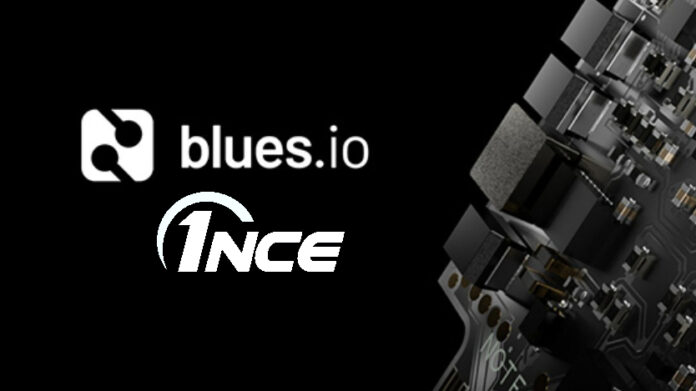US IoT developer Blues (Blues Wireless) has signed with Germany-based virtual IoT operator (MVNO) 1NCE to more than double its roaming access to national mobile networks around the world. The partnership has been presented by the pair as one between “the only companies offering global, lifetime coverage for IoT devices”. It means IoT solutions based on the Boston firm’s hardware and software now work in 158 countries, compared to 140-odd before.
Blues claims that 800-odd enterprises use its IoT hardware. It is unclear how much crossover there is between the two companies’ separate roaming footprints. Blues said simply that “1NCE’s coverage… adds to the 140 countries [it] already [has] covered”. In particular, it will offer extended coverage via 1NCE to IoT developers taking its Notecard IoT module – with “global expansion needs beyond those areas bundled with the Notecard product”.
A statement explained: “Notecard’s firmware supports failover to a secondary SIM for uninterrupted connectivity, so customers can leverage 1NCE for reliable Notecard coverage within previously underserved regions. APIs, libraries, documentation, source code, open hardware designs and community simplify the low-code engineer and developer experience as they progress from prototype to pilot to production.”
Notecard works with the Notehub platform to route data from IoT products to sundry cloud applications. Blues calls itself a “hyper-scaler focused on 5G IoT”. In January, it raised $32 million in Series A startup funding round led by New York early-stage investor group Positive Sum, with support also from Four Rivers, Northgate, and Qualcomm. Previous backers Sequoia, Cascade, Lachy Groom and XYZ also participated in the round.
The new money has been earmarked to meet “growing demand from enterprises and developers worldwide”. A press statement about the 1NCE deal pointedly called 1NCE a “software company”. 1NCE said at the start of the year it wants to repeat its trick with flat-rate IoT pricing to also “disrupt” the IoT industry with free device and cloud software. At CES in January, it launched a new operating system (OS), 1NCE OS, to provide free software tools to help to monetise IoT data.
The firm, notable in the busy IoT MVNO space for drawing investment from Deutsche Telekom and Softbank, also announced the creation of a new software division. It said it will not charge IoT developer-customers for the new OS tools, which include various software applications to help with cloud integration, device management, and energy optimisation. Instead, they will be available with its classic 10-for-10 flat-rate airtime fee ($/€10 for 10 years).
Jim Hassman, president at Blues, commented: “Our partnership with 1NCE extends our customers’ IoT coverage to support testing and product deployments around the world. Blues customers use our Notecard to tackle important missions, from monitoring air quality to reducing food waste. Together, 1NCE and Blues support our customers’ ingenuity with our joint commitment to simplicity, enterprise-grade reliability and scalability in the cloud.”
Ivo Rook, chief operating officer at 1NCE, said: “Blues has one of the best IoT solutions in the market, and we see eye-to-eye on the need for global connectivity that’s bundled upfront and included in a customer’s device. Partnering with Blues will allow us to do what we do best: making it easy for customers to collect data anywhere in the world by turning connectivity into a nearly invisible part of the IoT value chain.”
Meanwhile, Blues kicked off the year at CES with a no-code over-the-air (OTA) firmware update capability for its Notecard module, which it said “set a new standard for flexibility and security in the IoT industry”. The gambit is to allow device builders to implement firmware updates in IoT devices without writing any code, only by “making a few simple wiring changes between the Notecard and the microcontroller (MCU)”.
It said: “Developers may choose from a large number of MCUs, programming languages, and real-time operating systems (RTOS), and can even perform updates on ‘native’ applications with no code from Blues and no RTOS at all. This capability from Blues continues to ease the developer’s IoT journey, bringing cellular cloud-connected products realistically within reach of every developer, no matter their skill level.
“The ability to update firmware over-the-air is table stakes in IoT, enabling remote delivery of bug fixes and security updates to devices after they’ve been deployed… Implementing updates is a complex and risky endeavour, requiring code that safely ‘swaps itself’ in-place – reverting to ‘last known good’ versions upon failure. This tricky code is generally placed within the application itself, or within its RTOS, requiring a special ‘bootloader’ and firmware layout.”
It went on: “The Notecard acts as a ‘secure coprocessor’ to offload cellular burdens from the application, including that of downloading and verifying firmware updates from the cloud. Now, by giving [it] control over the MCU’s ‘strapping pins’, [its] new firmware update capability enables it to reset and lay-down new firmware and data into the MCU’s storage ‘from the outside’, requiring no cooperation with the application or RTOS running within that target.”

